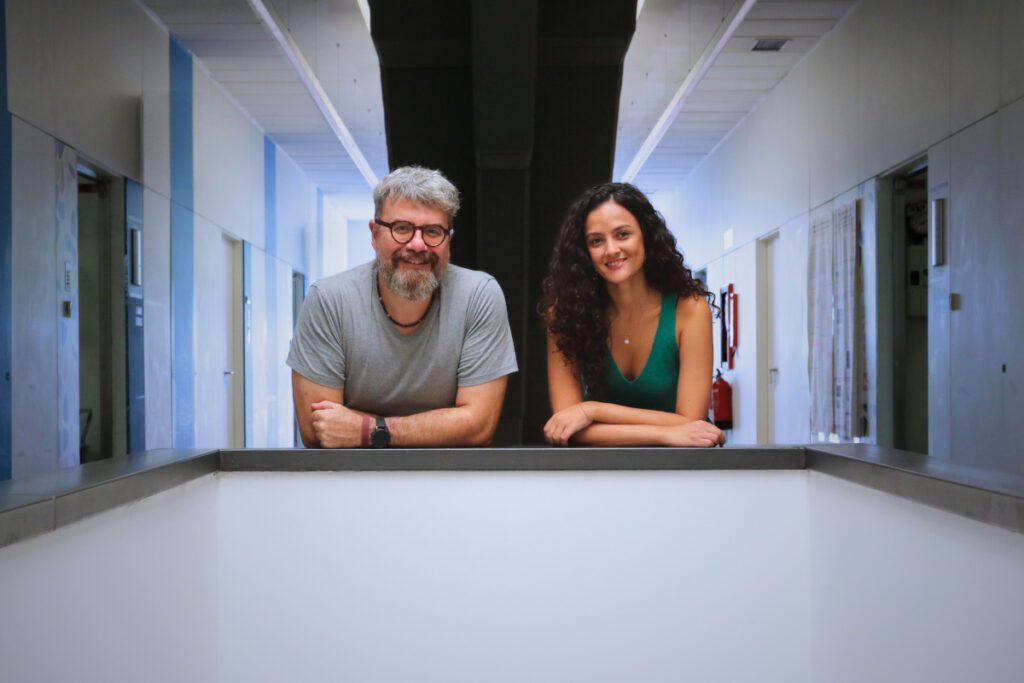Researchers at the Institute for Bioengineering of Catalonia (IBEC) have created the world’s simplest artificial cell capable of chemical navigation, migrating toward specific substances like living cells do. This breakthrough, published in Science Advances, demonstrates how microscopic bubbles, called vesicles, can be programmed to follow chemical trails. This breakthrough reveals the bare essentials needed to make synthetic life move with purpose. Decoding how vesicles navigate reveals how cells communicate and transport cargo, and provides a blueprint for engineering targeted drug delivery systems

Researchers at the Institute for Bioengineering of Catalonia (IBEC) have created the world’s simplest artificial cell capable of chemical navigation, migrating toward specific substances like living cells do. This breakthrough, published in Science Advances, demonstrates how microscopic bubbles can be programmed to follow chemical trails. The study describes the development of a ‘minimal cell’ in the form of a lipid vesicle encapsulating enzymes that can propel itself through chemotaxis.
Bacteria rely on it to find food, white blood cells use it to reach sites of infection, and even sperm cells navigate towards the egg through chemotaxis. By recreating it in a minimal synthetic system, we aim to uncover the core principles that make such movement possible.
Bárbara Borges
Cellular transport is a vital aspect of many biological processes and a key milestone in evolution. Among all types of movement, chemotaxis is an essential strategy used by many living systems to move towards beneficial signals, such as nutrients, or away from harmful ones.
‘Bacteria rely on it to find food, white blood cells use it to reach sites of infection, and even sperm cells navigate towards the egg through chemotaxis,’ explains Bárbara Borges Fernandes, a PhD student in the Molecular Bionics group at IBEC, Professor at the Faculty of Physics at the University of Barcelona, and the study’s first author. ‘What we find particularly fascinating is that this type of directed movement can occur even without the complex machinery typically involved, such as flagella or intricate signalling pathways. By recreating it in a minimal synthetic system, we aim to uncover the core principles that make such movement possible.’ She adds.
Being able to engineer an artificial cell could help scientists better understand how cell units drive further evolution into more complex structures. “These synthetic cells are like blueprints for nature’s navigation system,” says senior author Professor Giuseppe Battaglia, ICREA Research Professor at IBEC, Principal Investigator of the Molecular Bionics Group and leader of the study. “Build simple, understand profoundly.”
Liposomes and pores: boats and engines
To achieve this, the research team studied how cell-like vesicles move in gradients of two substrates: glucose and urea. They enclosed glucose oxidase or urease enzymes within lipid-based vesicles, called liposomes, to convert glucose and urea into their respective end products. The liposomes were then modified by adding an essential membrane pore protein. This protein acts as a channel for substrates to enter the synthetic cell and for the products of the reactions to exit.
These synthetic cells are like blueprints for nature’s navigation system. Build simple, understand profoundly.
Giuseppe Battaglia
It is known that active motion depends on breaking symmetry. By trapping the enzymes inside the particle and utilising the pores as the primary exchange points, a difference in chemical concentration is generated around the particle. This causes fluid flow along the vesicle’s surface and directs the particle’s movement. It is as if the liposome were a boat, and the pore and the enzyme were its engine and navigation system.

From passive transport to active chemotaxis
The research team analysed the transport of over 10,000 vesicles inside microfluidic channels with glucose or urease gradients to understand general population behaviour. They studied the trajectories of vesicles with varying numbers of pores and compared them with those of control vesicles lacking pores.
‘We observe that the control vesicles move towards lower substrate concentrations due to passive effects other than chemotaxis. As the number of pores in the vesicles increases, so does the chemotactic component. Eventually, this reverses the direction of movement, causing the vesicles to move towards areas with higher substrate concentrations”, Borges explains.
These results are promising from a biochemical perspective because the elements studied are ubiquitously present in the structure of a large majority of cells.
“Watch a vesicle move. Really watch it. That tiny bubble holds secrets: how cells whisper to each other, how they ship life’s cargo. But biology’s machinery is noisy, too many parts! So, we cheat. We rebuild the whole dance with just three things: a fatty shell, one enzyme, and a pore. No fuss. Now the hidden rules jump out. That’s the power of synthetic biology: strip a puzzle down to its bones, and suddenly you see the music in the mess. What once seemed tangled? Pure, elegant chemistry, doing more with less.” describes Battaglia.
The study was conducted in collaboration with José Miguel Rubí’s team at the University of Barcelona (UB), who made the theoretical predictions. The study also benefited from the involvement of the Institute for Physics of Living Systems and the Department of Chemistry at University College London, the University of Liverpool, the Biofisika Institute (CSIC-UPV/EHU) and the Ikerbasque Foundation for Science.
Reference article
Barbara Borges-Fernandes, Azzurra Apriceno, Andres Arango-Restrepo, Safa Almadhi, Subhadip Ghosh, Joe Forth, Jorge Pedro Lopez-Alonso, Iban Ubarretxena-Belandia, Jose Miguel Rubi, Lorena Ruiz-Perez, Ian Williams and Giuseppe Battaglia. The minimal chemotactic cell. Science Advances (2025). DOI: 10.1126/sciadv.adx9364





